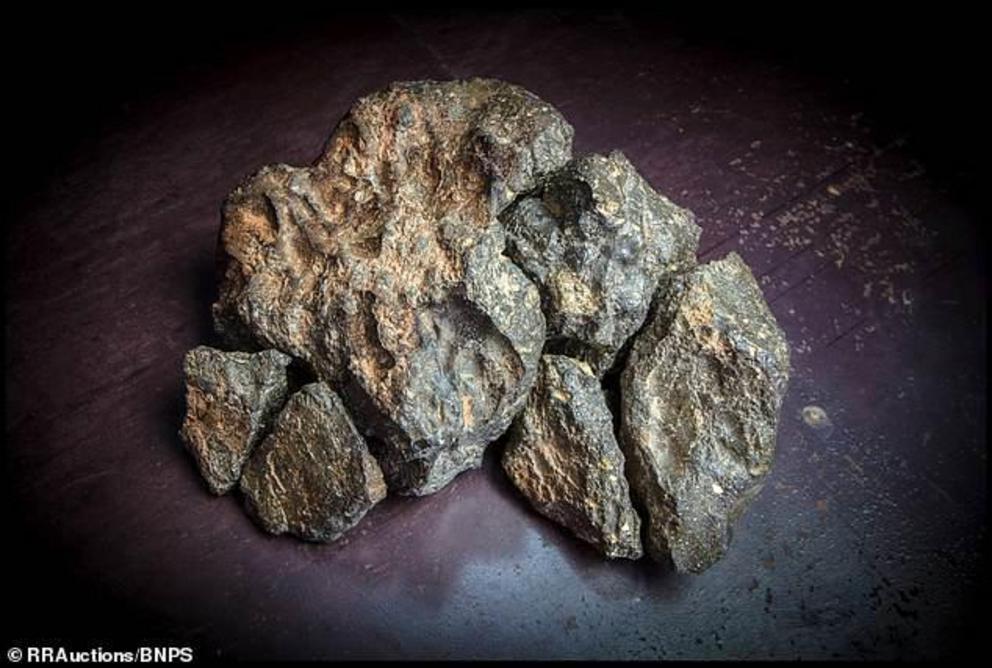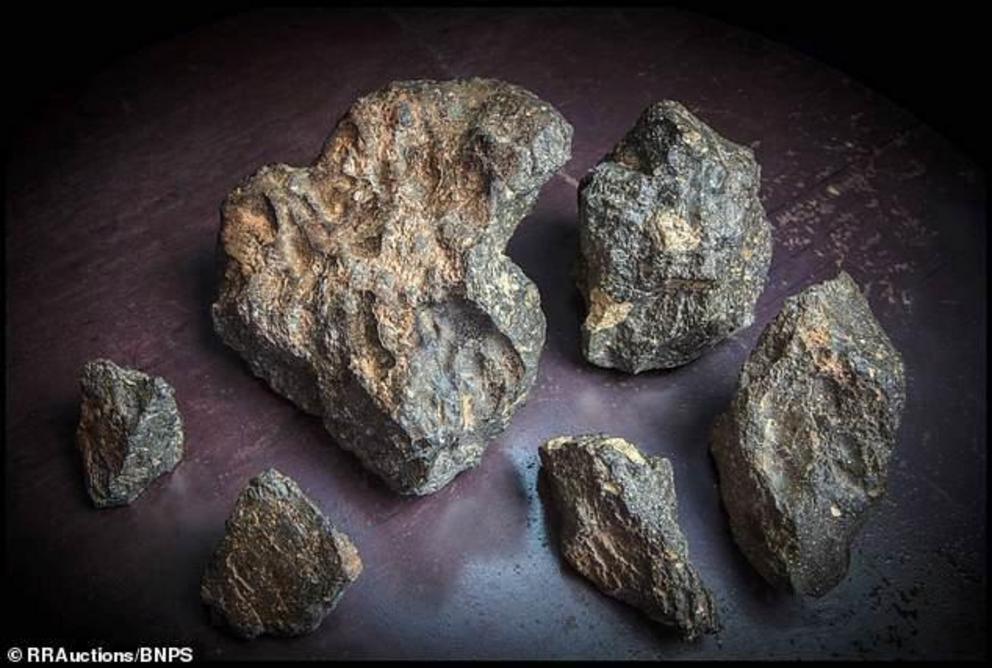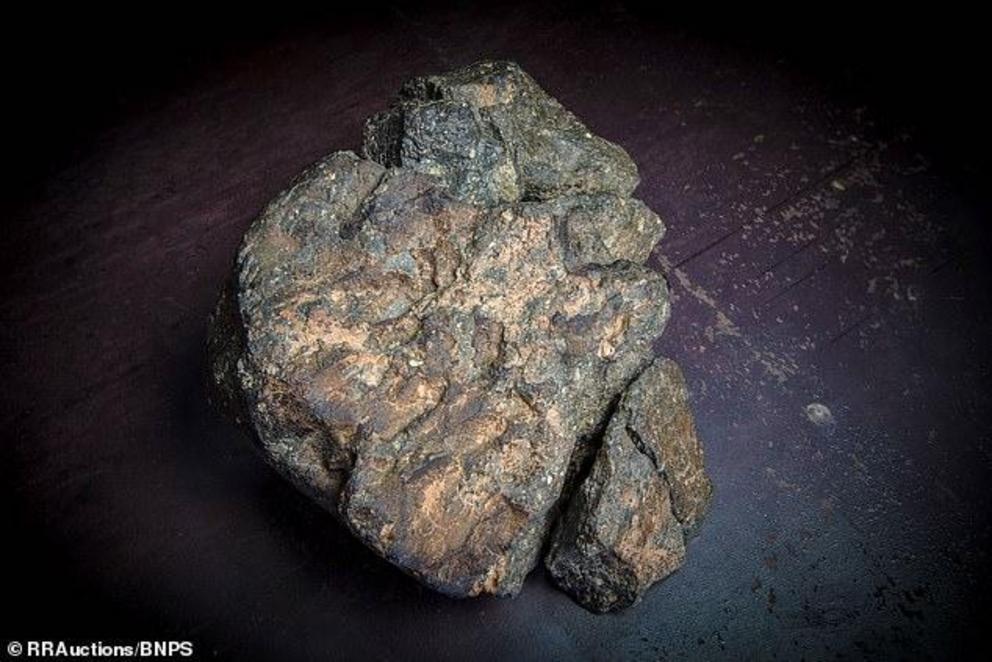Giant 12lb piece of lunar rock will go on sale for an astronomical $500,000
A huge piece of the moon which crashed down to Earth is being sold for $500,000 (£380,000).
The 12lb (five kg) lunar meteorite is made of up of six fragments that can be pieced together like a jigsaw.
The hefty chunk of rock, unofficially known as 'The Moon Puzzle' due to its unique shape, was found last year in the Sahara desert.

It is one of the largest chunks of moon rock to go on sale publicly experts say, dwarfing similar items at auction that typically only weigh a few hundreds grams.
The largest part of the meteorite is an impressive six pounds (two kg) and it measures more than seven inches by five inches (17x12cm).

A meteorite expert described the rock as the most 'significant' of its kind to go on the market.
Geoff Notkin, chief executive of Aerolite Meteorites, who hosted the US TV show Meteorite Men, said: 'This meteorite was blasted off the surface of our moon in the distant past, likely by the impact of a different meteorite, then journeyed the 250,000 miles to Earth.
'Against all the odds, it survived a fiery descent through our atmosphere to be found in the wilds of the deserts of North West Africa in 2017.
'Few, if any, of the world's top museums have a lunar meteorite that is anywhere near this in size and uniqueness.
'Without a doubt, this is one of the most important meteorites available for acquisition anywhere in the world today.
'It is perhaps the most significant example of our nearest celestial neighbour ever offered for sale in the history of meteorite science.'
The meteorite - officially titled North West Africa (NAW) 11789, lunar feldspathic breccia - has been put up for sale by US-based auction house RR Auctions.

The hefty chunk of rock, unofficially known as 'The Moon Puzzle', was found after it plummeted in the Sahara desert last year. It is one of the largest chunks of moon rock to go on sale and those that come to auction typically only weigh a few hundreds grams

The largest part of the meteorite is an impressive six pounds (two kg) and it measures more than seven inches by five inches (17x12cm)
Bobby Livingston, executive vice president of Boston-based auction house, said: 'We are honoured to present the world's very first look at this magnificent discovery.
'It is, without a doubt, one of the largest lunar meteorites to be put up for public auction.'
The timed auction ends on October 18.
While it is unknown how old the 'Moon Puzzle' rock is, research carried out a few years ago suggests that the moon formed around 4.51 billion years ago, which is just 60 million years after the solar system formed.
There had been contradictory evidence which suggested the moon formed between 150 to 200 million years after the solar system was born.
The new findings were published in the Sciences Advances journal on January 11, 2017.
The oldest of the lunar meteorites is around 20 million years old, although most would have been ejected in the past hundreds of thousands of years.
The most common cause is being struck by another piece of space rock.
WHAT ARE THE DIFFERENT TYPES OF SPACE ROCKS?
An asteroid is a large chunk of rock left over from collisions or the early solar system. Most are located between Mars and Jupiter in the Main Belt.
A comet is a rock covered in ice, methane and other compounds. Their orbits take them much further out of the solar system.
A meteor is what astronomers call a flash of light in the atmosphere when debris burns up.
This debris itself is known as a meteoroid. Most are so small they are vapourised in the atmosphere.
If any of this meteoroid makes it to Earth, it is called a meteorite.
Meteors, meteoroids and meteorites normally originate from asteroids and comets.
For example, if Earth passes through the tail of a comet, much of the debris burns up in the atmosphere, forming a meteor shower.
Video can be accessed at source link below.
